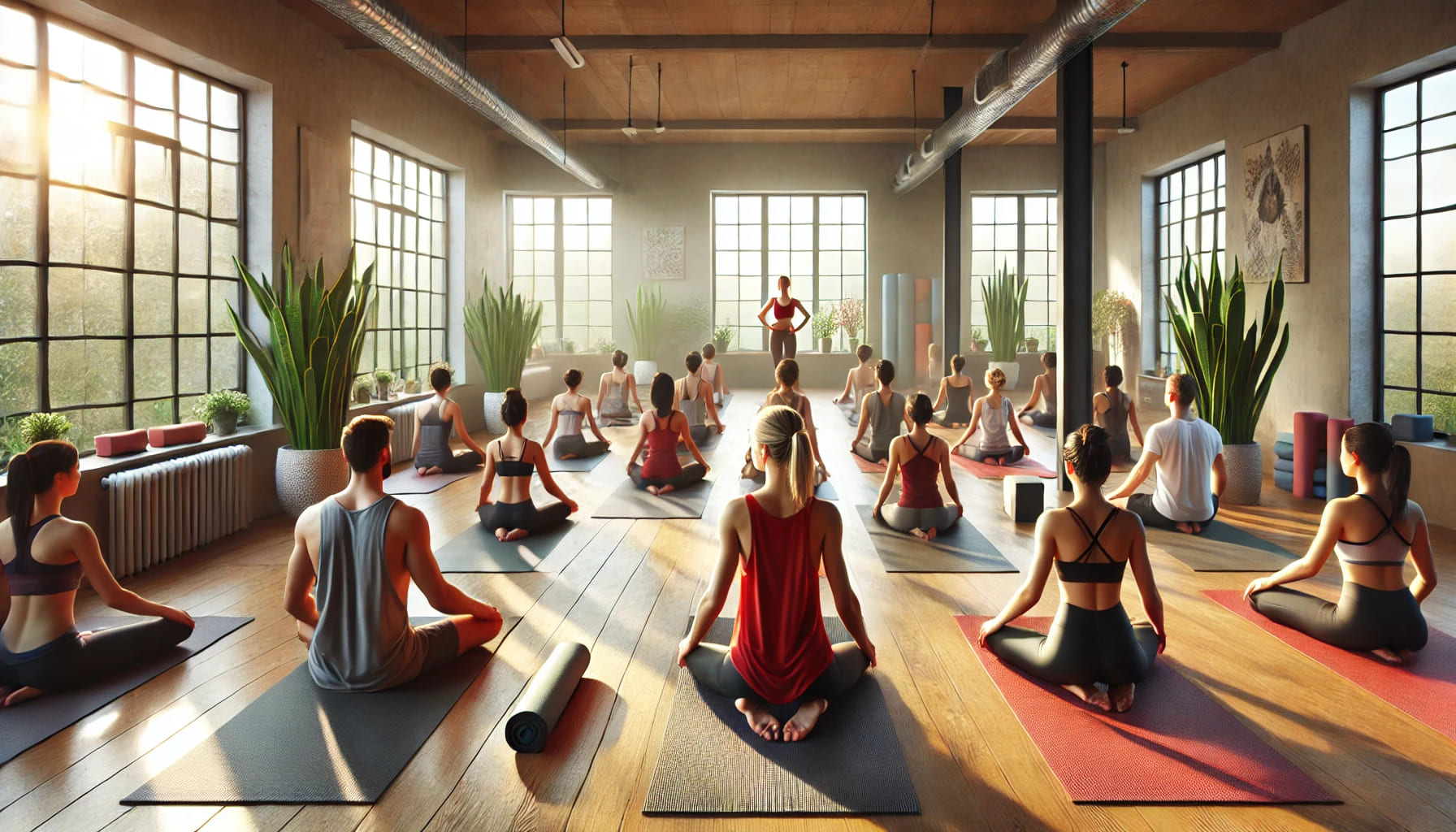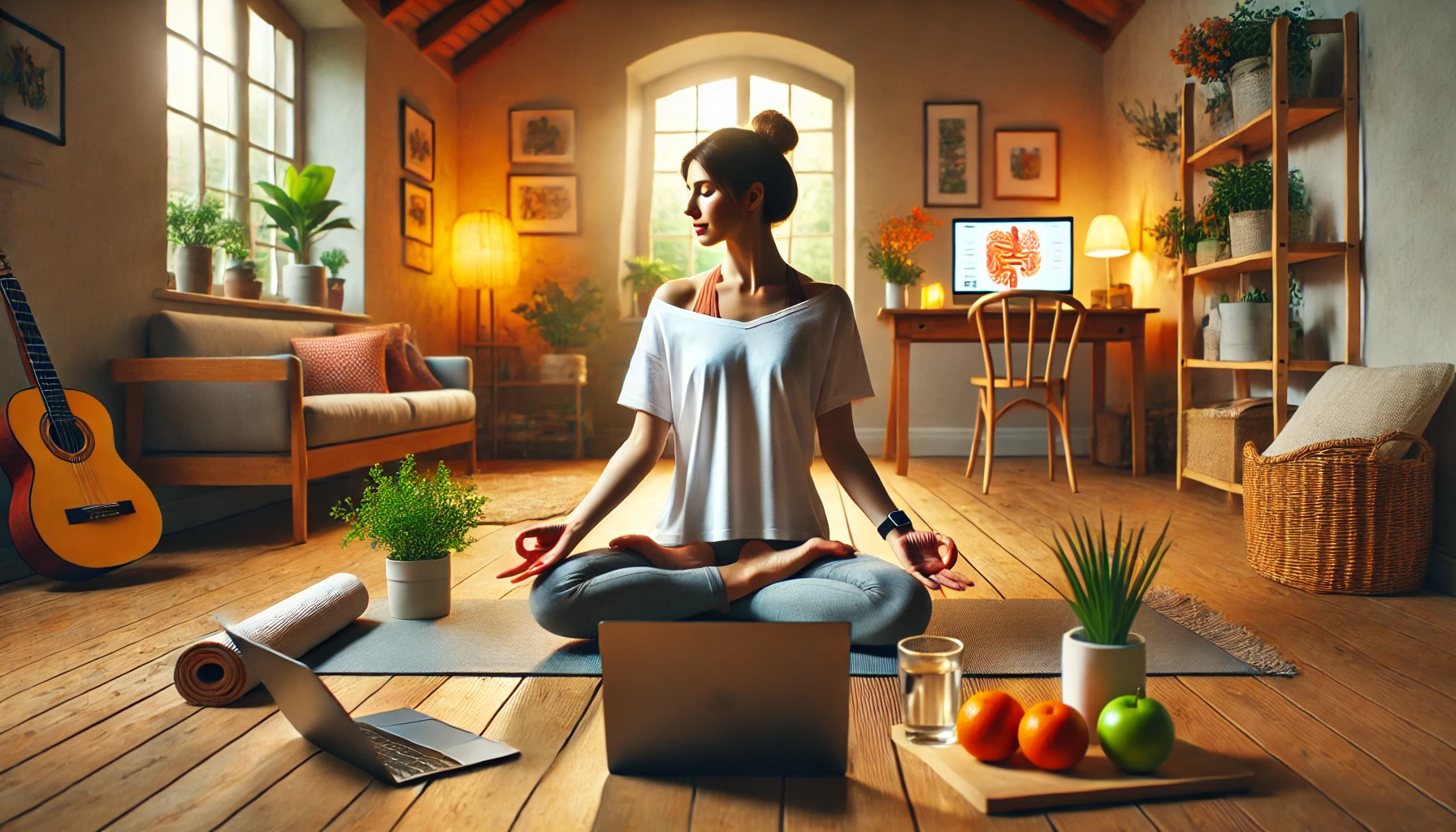Not Your Mind, Not Your Thoughts – So Who Are You?
Who’s Really Meditating?
Let’s sit with a simple question: Who is meditating?
Really, no. Who’s observing your breath? The one attempting to concentrate? The one who becomes sidetracked and then regains focus? It may seem a bit… strange to ask this question. Perhaps even bothersome. But stay with me—it could change your perspective on meditation forever.
This is how it begins…
On your mat, you are seated. It might be early in the morning or the end of a long day. You close your eyes and start to concentrate. on the breath. Regarding the noises. On the quiet. And in a matter of seconds, ideas enter like unexpected visitors. A list of things to buy. You heard that last week. Suddenly a song lyric.
Then, if you’re lucky, you see it taking place. “Oh wait, I’m thinking again,” you realize.
However, who is observing that?
Behind the thoughts, the observer
This is the best part.
Your thoughts are not who you are. You’re not even attempting to control your thoughts. It’s all being watched by you.
It’s similar to being in a movie theater. The thoughts are vivid, dramatic, and intense like the film on screen. However, you are the one who is observing the movie from a distance. The issue? The majority of us forget we’re seated. We become engrossed in the story. We take on the roles of protagonist, antagonist, and composer. We become so engrossed that we lose sight of the audience.
The key to effective meditation is to keep in mind that you are the one observing.
“But I don’t understand.”
Completely reasonable. It’s an odd idea.
Let’s use another example: Have you ever held another mirror behind you while gazing into a mirror? You see yourself reflected in your reflection, which reflects you, and so on. When you begin to observe the observer, it may feel like that. Strangely liberating, but also a little psychedelic.
You’re entering a realm where you can truly see what’s happening, rather than merely responding to life. from afar. A little clearer.
This has nothing to do with dozing off. It involves focusing so intently that you become conscious of your own consciousness. And wow, from that space. Magic occurs.
Benefits in real life (not only woo-woo content)
Let’s be honest. Life is a mess. More than ever, our thoughts are loud. There is a lot of stress from work, personal concerns, and phone notifications. However, things slow down when you learn to enter that inner observer’s space. You begin to respond instead of react. You are calmer, not just that you feel calmer.
Imagine that you are sitting on the hill, watching the storm pass, rather than in the storm itself. Even the loudest thunder doesn’t tremble you as much up on the hill when you’re there.
Then, how can we “observe the observer”?
It’s easy, but not always.
You sit first. No plans. No objectives. Simply sit. Pay attention to the breath.
Next, observe the person observing the breath. It may sound ridiculous, but give it a shot.
“Who is noticing this breath?” ask yourself.
Then allow the question to fade. Whatever comes, sit down.
There is no pressure. No flawless responses. Just taking note. Taking note. Existing.
The “trying too hard” trap
Many people (yes, even experienced practitioners) make mistakes with this. We make an effort to compel meditation. Make an effort to get somewhere. Aim for a “deep experience.” However, that is just another mental trick. The observer makes no attempt. It simply is.
And when you realize you’re making an effort? That’s acceptable as well. Simply take a step back. Look at the person making an effort. Do you see where this is going?
To be honest, it’s kind of funny. All of us are merely layers of thought and work, but underneath it all, something remains. Something quiet. The true meditator is that.

Here’s what yoga teaches us
This is the core of true dhyana (meditation) in classical yoga, yes, the kind we study in our teacher training course. It’s not about zen music or pretty poses. It involves removing the layers. locating that silent observer.
In the Yoga Sutras, Patanjali discusses this. The goal of the practice is to calm mental turbulence so that the seer can remain true to itself. “Stop getting lost in the noise, and remember who you really are” is what that fancy yogic phrase means.
What about our training? Understanding yoga is more important than simply practicing it. profoundly. In a genuine way. You will acquire the necessary tools to investigate this particular matter. Not only for yourself, but also so that you can mentor others.
Let’s be honest.
You may sit and feel like a monk on certain days. Calm, motionless, nearly radiant.
On other days? Your brain will feel like it’s running on high speed.
Both are doing well. Really.
Perfection is never the aim. It’s there.
You can watch it even if your mind is racing. The practice is that observation. The gold is that.
Concluding remarks (well, for now)
This route? It’s not a straight line. It’s not always spotless or suitable for Instagram. However, it is real. It is a human. It is living.
And if you have ever questioned whether meditation is “working” for you, perhaps the answer lies in this: Who is it that is asking?
Check out our teacher training course if you want to delve deeper into this practice, learn how to observe the observer, and teach others how to do the same. Though designed for everyday life, it is based on the wisdom of tradition. for your own life.
We maintain realism, personalization, and groundedness.
Visit onlineyogalife.com to join us. It is better to walk this path together.





























